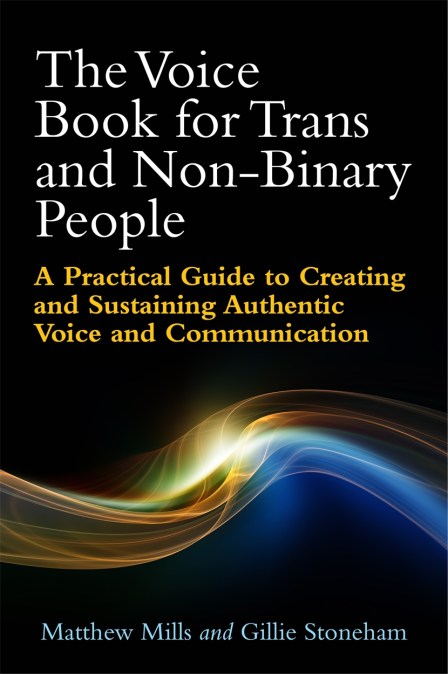Written by two specialist speech and language therapists, this book explains how voice and communication therapy can help transgender and non-binary people to find their authentic voice. It gives a thorough account of the process, from understanding the vocal mechanism through to assimilating new vocal skills and new vocal identity into everyday situations, and includes exercises to change pitch, resonance and intonation. Each chapter features insider accounts from trans and gender diverse individuals who have explored or are exploring voice and communication related to their gender expression, describing key aspects of their experience of creating and maintaining a voice that feels true to them.
This guide is an essential, comprehensive source for trans and non-binary individuals who are interested in working towards achieving a different, more authentic voice, and will be a valuable resource for speech and language therapists/pathologists, voice coaches and healthcare professionals.
This guide is an essential, comprehensive source for trans and non-binary individuals who are interested in working towards achieving a different, more authentic voice, and will be a valuable resource for speech and language therapists/pathologists, voice coaches and healthcare professionals.
Newsletter Signup
By clicking ‘Sign Up,’ I acknowledge that I have read and agree to Hachette Book Group’s Privacy Policy and Terms of Use
Reviews
[This book] is an invaluable resource for voice specialists wishing to increase their confidence with trans clients...An essential text for client and clinician alike.
Changing the gender expression of your voice and communication? This book is essential for your journey. Speech and language therapists will find it equally invaluable. Presented with clarity, sensitivity and optimism - it is enriched by reflections from people who have used this work to find their unique and authentic voice. Enjoy the journey!
This book will be one of the most constructive, practical go-to manuals on the speech pathologist's desk. It is crammed full of useful practitioner tips for those working with transgender people on their vocal presentation. This book has real clarity, but is also very readable. It not only explains the vocal problems that many transgender people face as they progress through hormonal therapy, but it is also full of usable exercises to help the practitioner help them. This will be an excellent addition to the practitioner's toolkit.
This pithy, practical guide is a treasure trove of rare and wonderful gems - particularly the exercises for trans men and non-binary people, often neglected but vulnerable to crippling self-consciousness and even phobia around speaking. Clinicians and clients alike, I unreservedly recommend The Voice Book to anyone looking to feminise, masculinise, neutralise or just explore the potential of voice.
Your body can feel like it's betraying you with Gender Dysphoria. Upset by your appearance? Shut your eyes and avoid mirrors. But an incongruous voice? You hear that night and day. So this book is invaluable. The authors show how speech therapy really can move mountains and produce happy confident speakers, at home in their own skin.
